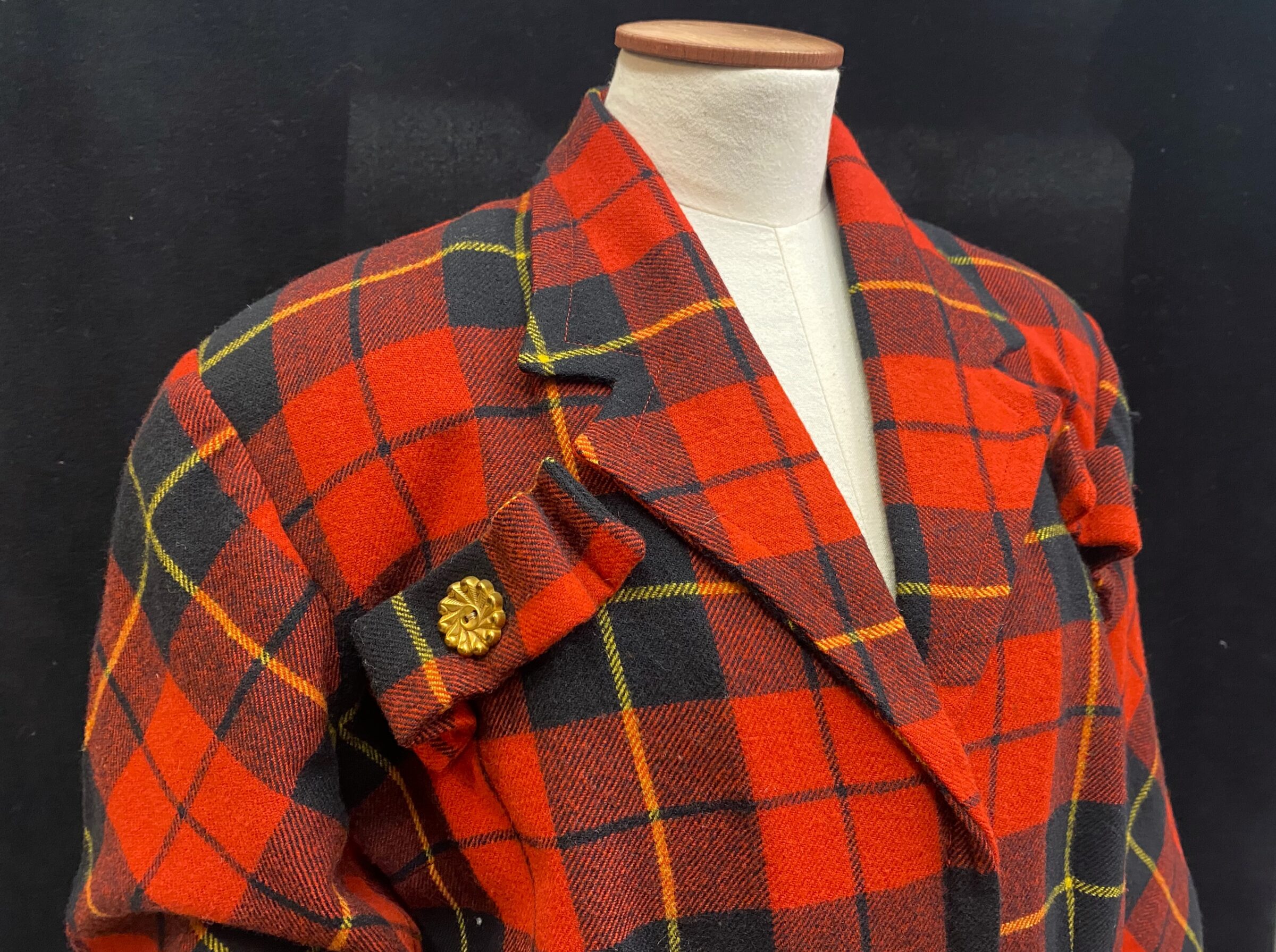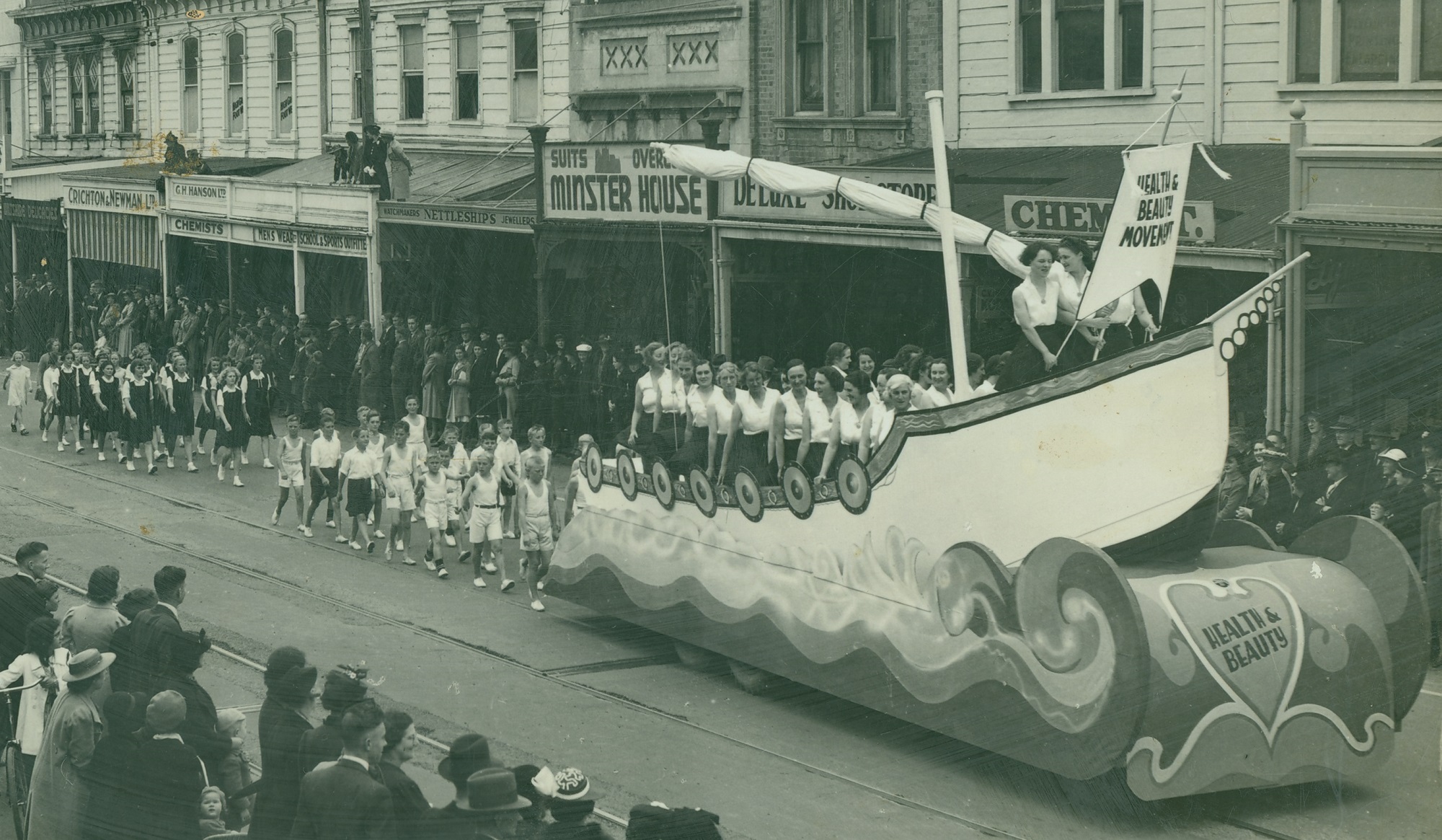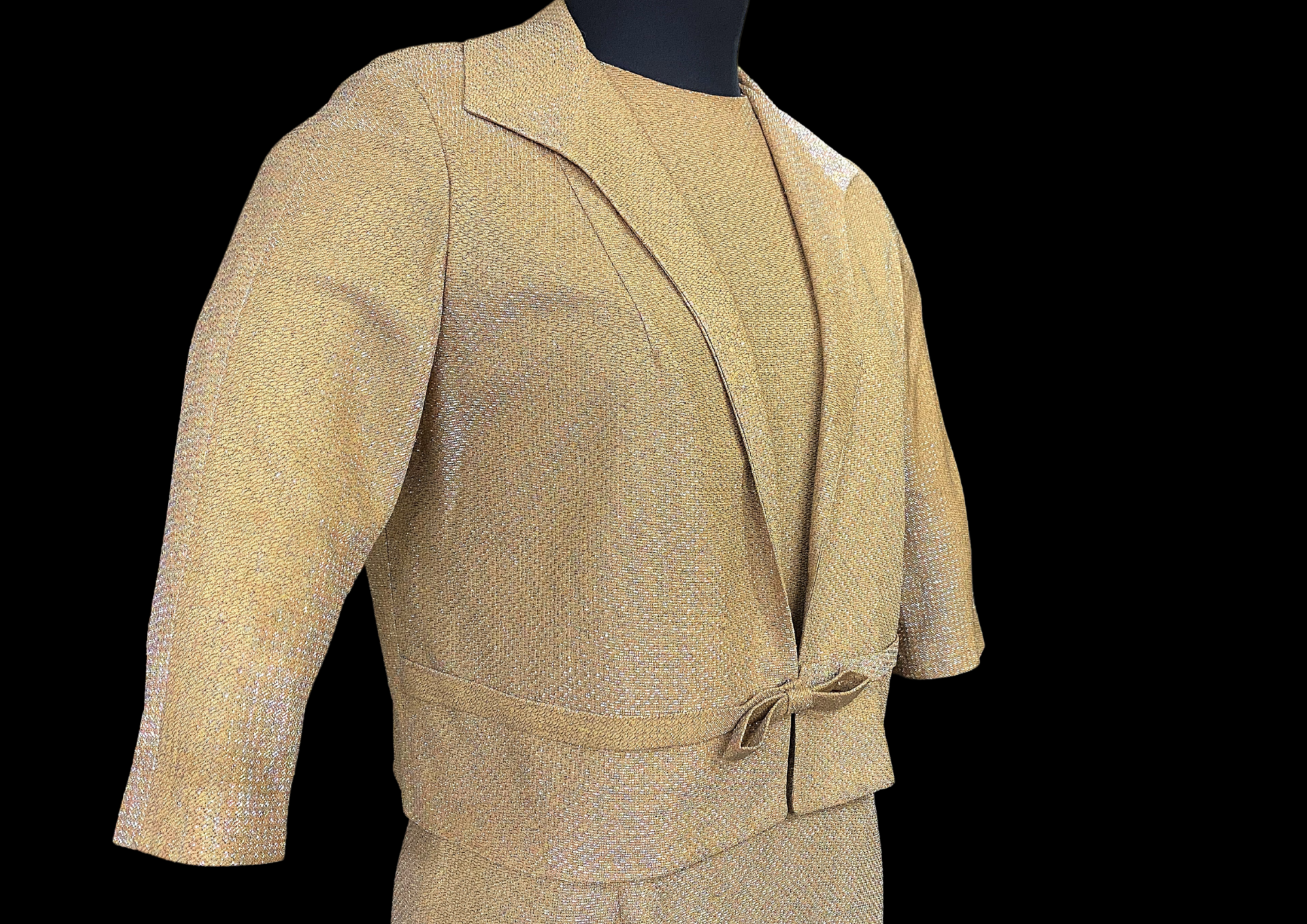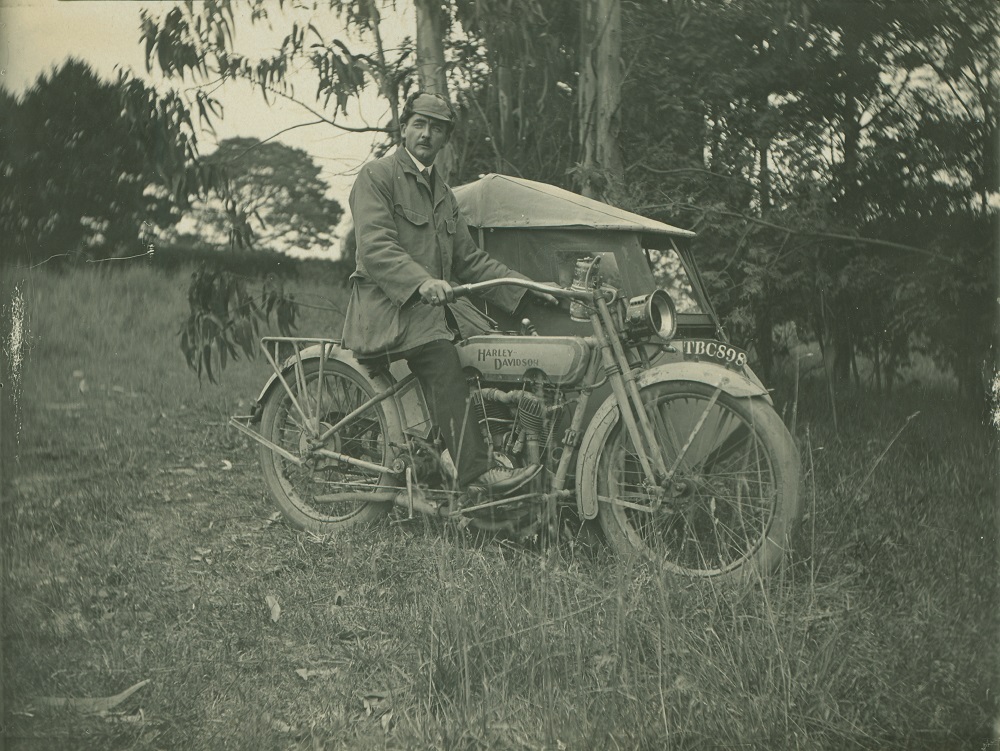Collection Stories
Jean Lambert, living at Westmere at the time, wore this rich gold satin dress overlaid with dramatic gold, black, pink, and red patterned lamé. This gown was made when she was in her 40s and certainly evokes the glamour of the 1930s, glittering in defiance of global Depression, and treasured until World War II and post-war recovery came along.
The satin bodice has a v-neckline at the front and back. The patterned lamé drapes elegantly over one shoulder and drops to form a skirt. A kick panel in the lamé skirt reveals the gold satin underskirt. A panel of satin falls from the back of the right shoulder and a lamé rosette on the left shoulder completes the outfit.
Lamé fabric was frequently used in women’s evening wear at this time. It is made by winding metal strips around a single non-metallic thread, which was then woven with a warp or weft with more non-metallic thread. Examples of this kind of fabric date back 4,000 years and were the exclusive province of royalty, known as ‘cloth of gold’ because of its resemblance to gold jewellery and coins.
Lamé became popular for a different clientele during the 1920s and 1930s when fashions needed bright fabrics with some weight and movement in them. It was revived in the 1950s and 1960s when film stars and musicians like Elvis Presley and Liberace wore sophisticated lamé outfits.
Lamé is difficult to sew yet this gown is home-made, possibly by Jean herself. Evening gowns at this time were long and flowing, fitting closely to show womanly curves, and often incorporating clinging fabrics like silk, satin, chiffon and crepe de chine. They were usually floor-length, flaring from the hips and often had a small trailing train at the back. Jean Lambert’s dress exemplifies these fashionable features.
Jean Martin married Reverend Walter Lambert, an English Anglican vicar, in Jamaica in 1921. The couple travelled to England and then came to New Zealand in 1922. They moved from parish to parish in the central North Island and Nelson. On Walter’s retirement in 1931, they settled in Westmere, where he continued to stand in for Whanganui Anglican parishes when needed.
Jean and Walter Lambert were active in the Wanganui Repertory Theatre, which was incorporated in 1933. They organised local parish concerts and recitals and also took part in them. People got dressed up for social occasions and Jean clearly embraced beautiful formal evening wear to wear at them. Walter died in 1944 and Jean moved to Whanganui.
She held on to her glamorous wardrobe which included evening gowns, jackets and coats, shawls, and muffs from the 1920s to the 1940s and bequeathed them to the Museum. She died in 1975, aged 85.
By Libby Sharpe, Pou Tiaki/Senior Curator at Whanganui Regional Museum.
Image: Evening dress
1930s. Maker: unknown, possibly Jean Lambert
Photographed by Kathy Greensides
WRM 1975.46.82
View the full-length image.






